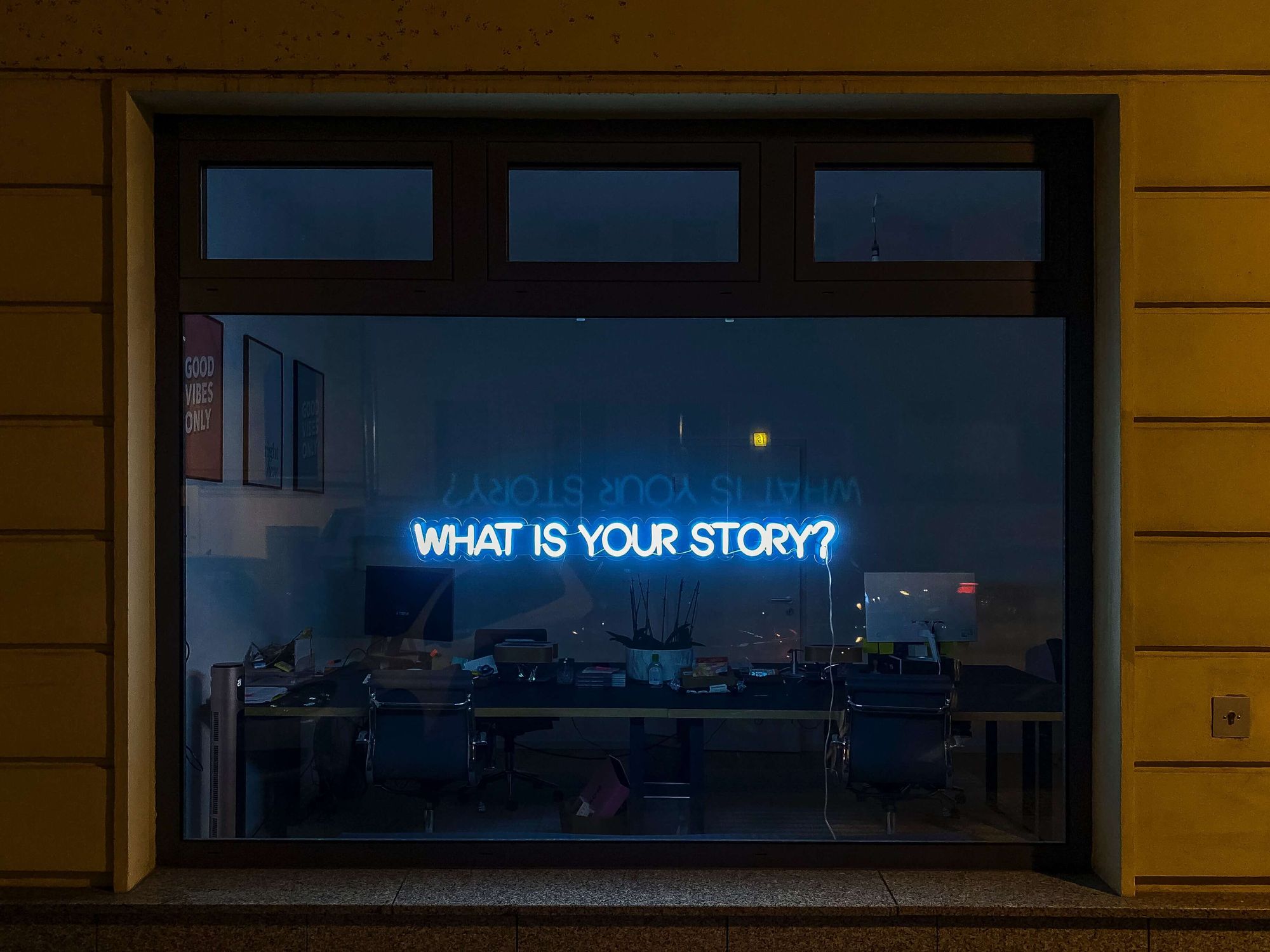It can be fun to "think big" when it comes to marketing and branding. Big, grandiose ideas and messages. Sweeping statements about the impact you're having on the world. That you're the best thing since sliced bread.
But that kind of messaging and storytelling can miss the mark. You can alienate your audience by not giving them something to connect with, you can make it confusing what your brand actually does, or you might just look foolish.
That's why Gastón Tourn, CMO of Appear Here, joined us again on the CMO Convo podcast to talk about keeping your messaging and storytelling focused on human beings and how your brand impacts them. He calls this your "micro-level brand purpose" and you can read all about what we discussed below.

- Building a CMO community
- What is a micro-level brand purpose?
- Showcasing the individual in your storytelling
- Identifying your micro-level brand purpose
- The problem with personas
- Making marketing the voice of your customer within the company
- The secret of customer-first storytelling
Prefer to listen? Check out Gaston's appearance on the CMO Convo podcast 👇
Building a CMO community
Hi, Gastón. Welcome back! How are you doing today?
I’m good. It’s great to be back. I think this is our third chat.
The third time's the charm, they say! Our last two conversations were great, and our audience appreciated them as well, Gastón, so it's an absolute pleasure to have you back.
We’re gonna be talking about a very interesting subject: micro-level brand purpose. We’ll be looking at individual human stories and how they relate to your brand.
But before we get into that, let’s talk about a recent development – you’re now a CMO Alliance ambassador. What inspired you to become an ambassador for the community?
I really enjoy my role as a CMO, and I think it's important that as a community of CMOs we come together to share our pains, but also to share how we can elevate our impact across different companies.
Of course, I'm biased, but I think the CMO role is the most fun role in the C-suite. You can contribute from so many different angles. Where other functions are focused on only the analytical or only the creative side of the business, marketing has the privilege of touching both analytical and creative matters.
At the same time, it’s the function that drives growth for the business, so all eyes are on marketing. Of course, that also means that there's sometimes so much pressure that CMOs are not able to explain their impact or succeed in their roles. In fact, the CMO role has the shortest tenure in the C-suite.
By being an ambassador to a community of CMOs, hopefully, I can elevate the role of CMO, help others to succeed, and increase our impact in the industry. It’s something I feel passionate about.

What is a micro-level brand purpose?
We often think of a brand as being this big, overarching entity, which of course, it is – it governs everything about a business from how it interacts with its customers to how it tells its story – but let's talk about micro-level brand purpose. What does it mean to you?
This is something that I’ve been working on almost from a thought leadership perspective. What does a brand marketing team do, and how can they increase their impact in a company? It all comes down to storytelling.
I'm quite passionate about storytelling, and I’ve always followed Hemingway’s principle: never talk about general emotions; always bring it to the concrete. If you talk about a man who is sad, that doesn't create any emotions. But if you talk about this incredible salesman who’s traveling across the country and suddenly he meets X, Y, Z, and you go down to the micro-level details of that journey, that's when you can start relating to him as a human being.
The emotional side of the brain connects with details; it doesn't connect with abstract ideas. There’s a lot of neuroscientific research around how we struggle to understand numbers. Of course, some people are better at math than others, but in general, the human brain struggles with numbers because it's an abstract concept.
It's still important that we communicate impact, but at the same time, we should be bringing stories to the micro level to make sure they activate the emotional side of the brain.
One thing that I’ve noticed is that most brand marketing teams start with very grandiose statements. The worst example is probably WeWork. Their grand purpose is something like “elevating the world's consciousness.” They're renting workspaces – I think it’s a bit of a stretch to say they're elevating the world's consciousness. But anyway, we already know what happened to WeWork.
You need to think about what your brand purpose is and make sure it's connected to your products. If not, it feels inauthentic. You don't need to communicate it in grandiose statements. Nobody buys into an abstract, wishy-washy statement.
The best way to make people understand what you do as a brand is to talk about your impact on a very micro level. Tell me about someone who has been impacted by your purpose.
That's what I call micro-level branding – showing how your brand has a purpose and an impact on one human being. When we are at that micro level, when we're talking about one human being, I can connect to that.

Showcasing the individual in your storytelling
Focusing on the individual is something that Appear Here does very well. A lot of your messaging highlights the stories of the people that your brand helps. Is that something that you've instigated in your time as CMO, or has Appear Here always had that as part of their brand messaging?
It's something that I started to lead on when I joined the company. I think I learned it when I was at Google. Google’s mission is quite well known. It’s “organize the world's information and make it universally accessible.” Again, quite a grandiose statement, but not as bad as “elevating the world's consciousness,” because Google delivers on its mission and it's more connected to the actual product.
To make it easier to understand what their mission means, the brand team at Google started to illustrate it on a micro level. There was, for example, a story about a village in Africa that started using Google to check the weather forecast, which meant that they could manage their harvests much better. They became much more economically successful thanks to knowing what the weather would be like next week.
That story of a village in Africa tells me much more about how Google is “organizing the world's information and making it universally accessible” than the statement itself does. It shows me how you're bringing that mission to life.
There was another beautiful story from Google India. It was the story of two friends who got separated when the partition happened – one ended up living in Pakistan, the other one in India. It’s the story of how they managed to reconnect through different Google products, and how they knew about what was happening on the other side through Google.
That's another interesting and concrete way of showing how you're organizing the world's information and making it universally accessible – with a story that you can connect to.
So that's where I learned this style of storytelling. It was never framed as micro branding at Google; it was just the way they intuitively did things, but I saw that it really worked. That's something that I’ve tried to bring to other brands I’ve worked for, particularly Appear Here.
We have incredible customers with really interesting stories at Appear Here, but I saw that we weren’t telling them. Instead, we were focused on our brand mission, which is to enable anyone with an idea to find a space to make it happen. We particularly want to democratize the high street and give everyone access to do business there.
The high street has been traditionally quite exclusive because it's expensive to launch there. At the same time, the landlords are the final decision-makers, and they sometimes have prejudices about new businesses or certain kinds of entrepreneurs. They're often the gatekeepers that don't allow entrepreneurs from diverse backgrounds to launch their ideas on the high street.
As a business, that has always been our purpose, and now we’ve started to communicate it with very concrete cases. One of the stories we shared recently, which I love, is from Steve. He’s one of our customers, and he has a restaurant in South London called Sharkbait & Swim.
Steve’s story is fascinating. He became homeless at the age of 16 in South London, and he was frustrated with what he was eating in hostels – a lot of junk food. He decided to improve his diet by basically learning how to cook through YouTube. From there, he became the chef of a few different Michelin-starred restaurants, so he really worked his way up.
His dream, though, was to run his own restaurant, but when he spoke to landlords, they were all like, “You don't have enough money, and you don't have the credentials. We can’t give you the space.”
Then he spoke to Appear Here. Our model democratizes access because we make it super simple for people to book a space, and we don't ask too many questions. If you have a great idea, we’ll give you a chance. Flexible retail allows you to see how your idea works. If it’s working, you get to extend the lease; if not, you can just pull out.
We loved Steve’s idea, and we gave him access to a space. He launched in South London, where he was living before, and it was an emotional journey for him because that’s where he was born – his whole story is based in that part of London.
His business is doing incredibly well. I spoke to Steve two or three weeks ago, and he was like, “We have so many bookings, I’m thinking about expanding. Do you guys have more spaces? Because we have so many customers.” People love the restaurant. When you have someone so passionate about food, like him, people in the neighborhood are like “This place is amazing,” and they all go there.
That's what I mean by telling stories at the micro level. You don't connect with the idea of giving anyone with an idea a space to make it happen, but you do connect with Steve, a real person who brought that purpose to life.
Identifying your micro-level brand purpose
This sounds great from a theoretical perspective, but, as you said, a lot of brands start with grandiose messages. How can a CMO go about breaking things down to identify their micro-level brand purpose?
One thing I’ve learned from the different companies I’ve worked for – this is my third CMO role – is that you can never spend too much time with customers. I would recommend to anyone in a CMO role that you spend more time with your customers – that's where you're going to learn your true purpose as a company.
A lot of marketing teams wind up living in an ivory tower, completely out of touch with the customer, especially compared to the commercial teams that interact with customers every single day.
My suggestion is this: if you're a CMO spend the first 60 days meeting at least one customer per week. Make it your purpose to get to know customers, real customers, who benefit from your business. Ask them what you're doing well, what you're not doing well, what your business does for them, and how you can do much more interesting content, for example.
Use those interactions to learn more about how they use your products. That's going to give you incredible ideas, not just for brand marketing, but for product marketing too, and for how you can improve your marketing mix.
It also builds your authority when you're dealing with other stakeholders. Stakeholder management is always complex, and a lot of CMOs struggle to influence other functions, but the best way to do that is to use customer insights and say, “Look, I talked to five customers, and they’re all asking for this product feature. I'm pretty sure it's something we need to prioritize.”
All those customer insights help you to build your influence within the business, but they also give you insight into the purpose of your brand. Start by asking yourself what your brand is doing for customers, and then elevate it by asking why. The brand is not the product; it has to be one level up. I would always ask, why are we doing this? What are we trying to do?
Of course, you need to find a middle ground. Going back to the WeWork example, if you go four or five whys up from what they do, you might reach “elevating the world’s consciousness,” but I would go down a few levels from that because it feels too far from the actual product. You want to get to something that’s elevated but still within a certain level of rationality.
So that's what I would do – start with customer insight, then elevate it to a point that feels a bit more purpose-led and inspiring. From there, you need the stories to back up that purpose, so go back to those customers and ask them, “Hey, would you mind if we tell your story? We think it's fascinating.”

The problem with personas
There are probably a lot of people thinking about how doing these customer interviews would be a great way to start constructing some personas. You’ve mentioned before that you don’t like personas; can you tell us why they’re a bad thing when it comes to brand marketing?
In the way that purpose statements can be quite abstract, so can personas. They’re particularly bad when they’re just based on assumptions. They become a barrier to getting to know your customers.
What I always recommend doing is just meeting your customers. Forget about personas. Have your customer as a reference when you're building marketing communications.
In my case, whenever we come up with an email, I ask my team, “What do you think Steve would say about this email?” because we know Steve, and we know how he thinks. It's just much easier to relate to real customers.
Another risk with personas is that they can easily become quite flat. You end up putting all middle-aged mums in the same box and treating them as if they’re the same person. The more I know human beings, the weirder I think they are – all of them. Trust me, a lot of mums have really wild dreams; they're not all how we think they're going to be.
Personas also end up reinforcing stereotypes, and those stereotypes communicate some of the social and cultural biases that we as a society need to challenge, particularly when it comes to gender and socioeconomic status.
We need to use more customer interviews as a way to bridge the gap with customers. Personas are probably just going to act as a blocker to getting to know the person on the other side.
Making marketing the voice of your customer within the company
When you've developed these insights into who your customers are, are they kept within the marketing department, or are they shared with other departments? Is it valuable for them to know about the insights you're developing?
Definitely. I think it's relevant for everyone. It also helps you to build strong relationships with the product team. Recently, we’ve been doing a lot of interviews, and we share relevant insights with our teams to make sure that there’s this perception of marketing being the voice of the customer in the business. I think marketing is the voice of the customer, but you're only going to be the voice of the customer if you actually speak to your customers.
So we did these interviews, and now we're trying to identify two or three action points for every team in the company. For editorial, “Here are two or three takeaways to take into consideration.” For product, “We're hearing that this isn’t working. Have you considered this as part of your product roadmap?” It helps you build your reputation as a team that is close to customers and always thinks of the customer first. It also makes you the voice of the customer in the business.
Another thing we do at Appear Here is brand tours. Our customers launch shops and stores in the city, so we go out and visit them. It’s almost like a safari.
Those brand tours sound very interesting. Seeing the concrete evidence of the work that the company is doing has got to be a great motivator for your team. Often, particularly in the digital marketing world, you don't see the results of the work that you're putting out, so taking people out to see the product of their work must be a great way to get them aligned and behind the brand message of Appear Here.
Completely. I think it's something that motivates everyone, including myself, and you can do this in every business. I used to work in dating apps – I was CMO of Bumble Group, which at that point was called the Badoo group. One thing I always tried to do there is connect my team to real couples who met through Badoo to understand how they interact with the app.
Some of those couples actually got married after they met on Bumble or Badoo. I feel like those stories are super important. First of all, they help you understand what you're doing, secondly, they show you how you can do it better.
Meeting customers also gives you really good ideas. One thing I learned in that role is that a lot of people have very bad dates with people they meet through the app. But that gave us an idea – maybe we should do a video series about the worst dates people ever had, and we made some really fun videos, particularly in Badoo, Spain.
We found that when people were talking about bad dates, they weren’t frustrated. In fact, they were really keen to tell you about the worst date they’d had. I also saw that with friends. Everyone is like, “Oh, my god. You won’t believe what happened.”
Even though everyone is curious about bad dates, it’s not necessarily the first idea that comes to a marketing team’s mind when they’re working on their content strategy. But by talking to users, we understood that these stories had a lot of potential.

The secret of customer-first storytelling
What are the best ways to go about telling these micro-level brand purpose stories?
I think the most important thing is understanding that as a brand, a founder, or an employee, you're never the main character. You're never the protagonist of that story. I know it hurts because we all have egos, but you always need to remind your team, especially if you're working in a founder-led business, that even the founder does not get the starring role in this story.
The protagonist of any story is the customer. I mentioned a few stories; one was that small village in Africa that benefited from knowing what was going on with the weather, thanks to Google. The main characters are the users in that small village. I mentioned the story about Steve too – that’s his story. The brand is the ally; it’s only there to help the main character overcome the obstacle they’re facing.
That obstacle is key too – in any good story, there needs to be some kind of conflict. This is my biggest passion in storytelling. I’m always telling people “Get more dramatic! Don't tell flat stories!” John le Carré said, “‘The cat sat on a mat’ is not a story. ‘The cat sat on a dog’s mat’ is a story.” So the question is, where is the dog? Because if there’s no dog, there’s no story.
Going back to Steve's story, he had to overcome a lot of obstacles when he was homeless, and then when he wanted to launch his own restaurant, he was facing more obstacles because landlords wouldn’t give him a chance. Appear Here, as an ally, helps him to overcome that obstacle. That's a great narrative structure for telling stories, in an interesting non-salesy way.
As for the format, there is no recipe. I think it depends on who your target audience is. If you're trying to influence CIOs, I imagine they're probably not on TikTok; they're gonna be reading newspapers. Actually, maybe they are on TikTok – who knows? No stereotypes. Go and speak to your CIO. They might be on TikTok.
Anyway, the format depends on your target audience. In our case, we found that video is quite important – that’s what a lot of our audience engage with most on social media. They also read content; they like guides and things that feel quite practical. It depends on who you're trying to influence. Just make sure that you're developing content in the formats that your audience is going to consume.
Well, Gastón, once again it's been an absolute pleasure speaking to you. You and your team do a fantastic job of telling these human stories – everyone should go and check them out.
Thank you so much.
What's your micro-level brand purpose, and how is your organization leveraging it? Need help identifying yours? Join the conversation with a global network of CMOs on the CMO Alliance Community Slack channel!




 Follow us on LinkedIn
Follow us on LinkedIn




